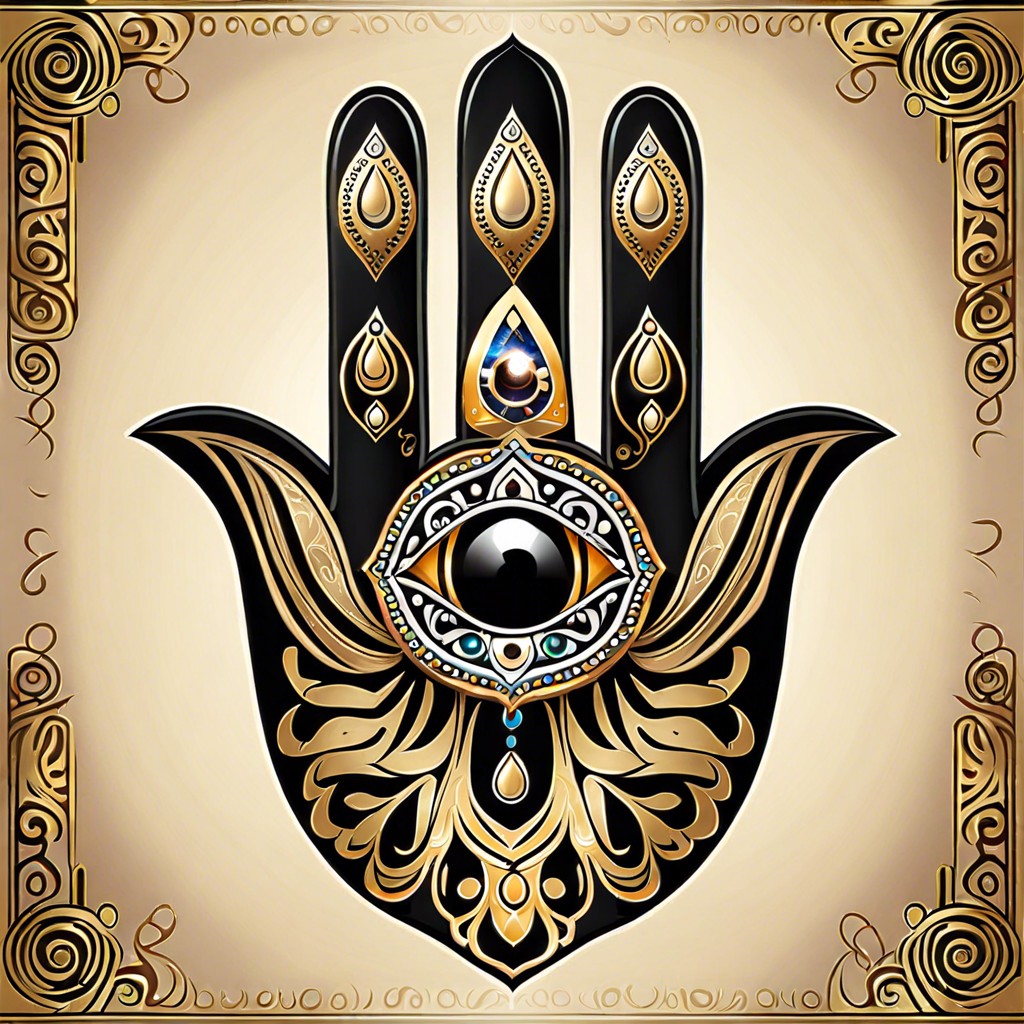Discover the spiritual significance and symbolism of the Hamsa Hand to understand its protective power and cultural importance.
The Hamsa Hand, steeped in rich historical origins and cultural significance, serves as more than just a captivating decorative element. This article delves into its symbolism across various traditions, exploring common uses, design variations, and the reasons behind its modern-day popularity. Whether you’re curious about its ancient roots or its contemporary appeal, you’ll find all the details you seek in the exploration that follows.
Key takeaways:
- Hamsa Hand: symbol of protection across cultures.
- Represents faith, strength, and unity in various traditions.
- Used as jewelry, home decor, and for meditation.
- Diverse designs offer unique cultural interpretations.
- Modern-day popularity in fashion, home decor, and tattoos.
Historical Origins and Cultural Significance

Tracing back to ancient Mesopotamia, the Hamsa hand has been a symbol of protection for millennia. It appears prominently in Jewish, Islamic, and Christian cultures.
In Jewish tradition, it’s often called the Hand of Miriam, named after Moses’ sister. Islamic culture refers to it as the Hand of Fatima, honoring the Prophet Muhammad’s daughter. While in Christian communities, the Hamsa represents the hand of the Virgin Mary.
Besides being a protective symbol, the Hamsa’s rich heritage highlights unity across diverse beliefs. Its enduring presence reflects deep cultural ties and shared values of faith, protection, and fortune.
Symbolism and Meaning in Different Traditions
In Jewish tradition, the Hamsa is often associated with the Hand of Miriam, believed to offer protection and bring blessings. It symbolizes God’s hand, guiding and protecting the wearer.
In Islamic culture, it’s known as the Hand of Fatima, representing faith and the five pillars of Islam. It’s considered a talisman that wards off the evil eye.
Within Christianity, the Hamsa can be seen as a symbol of protection and strength, sometimes linked to the Virgin Mary.
Middle Eastern and North African cultures traditionally use it as a defense against negative energies and to attract good fortune.
The eye frequently depicted in the center enhances its protective qualities, symbolizing the all-seeing eye watching over and protecting from harm.
It’s a cross-cultural symbol of unity, peace, and harmony, resonating with diverse meanings depending on the context.
Common Uses and Practices
The Hamsa hand can be found in homes, workplaces, and worn as jewelry. It’s often used in wall hangings, bringing protection and positive energy into living spaces. Wearing Hamsa jewelry, like necklaces and bracelets, allows individuals to carry its protective symbolism wherever they go.
People frequently place Hamsa amulets in their cars for safe travels. In some cultures, mothers hang Hamsa symbols near their children to ward off the evil eye. Artists incorporate it into paintings and decorative pieces, blending tradition with contemporary aesthetics.
Simple meditation practices sometimes involve focusing on a Hamsa image, inviting the attributes of protection and blessing into one’s thoughts and surroundings.
Variations in Design and Their Interpretations
One of the intriguing aspects of the hamsa hand is the diversity in its design. Each variation holds distinct meaning and cultural significance.
Some hamsa hands feature an eye at the center, commonly believed to ward off the evil eye. This eye, often called the “Eye of Fatima” or “Eye of Miriam,” serves as a protective symbol.
Ornate designs with intricate patterns, like flowers, fish, or stars, can also be found. These additional elements amplify the hamsa’s protective energies and may represent prosperity, abundance, and spiritual growth.
Another notable difference is the orientation. A downward-pointing hamsa is said to invite an abundance of goodness and fertility. In contrast, an upward-pointing hamsa is thought to offer powerful protection from negative energies.
These variations allow individuals to choose a design that resonates with their personal beliefs and needs, adding layers of meaning to this already rich symbol.
Modern-Day Applications and Popularity
Today, the hamsa hand is more than just an ancient symbol. It has found its way into mainstream fashion and home decor, resonating with people across different cultures and backgrounds. Jewelry featuring the hamsa hand is hugely popular, often seen in bracelets, necklaces, and rings. It’s prized not only for its beauty but also for its protective qualities.
Beyond accessories, the hamsa hand is frequently used in home decor. Many believe hanging a hamsa hand in their living space wards off negative energy and brings good luck.
It’s not uncommon to find the symbol incorporated into tattoos. For some, it serves as a permanent reminder of their spiritual beliefs and commitment to ward off evil.
Social media has also played a role in the resurgence of the hamsa hand. Influencers and celebrities often share their personal connections to the symbol, sparking further interest among their followers.
The hamsa hand’s versatility in modern-day applications underscores its timeless appeal and enduring power.





